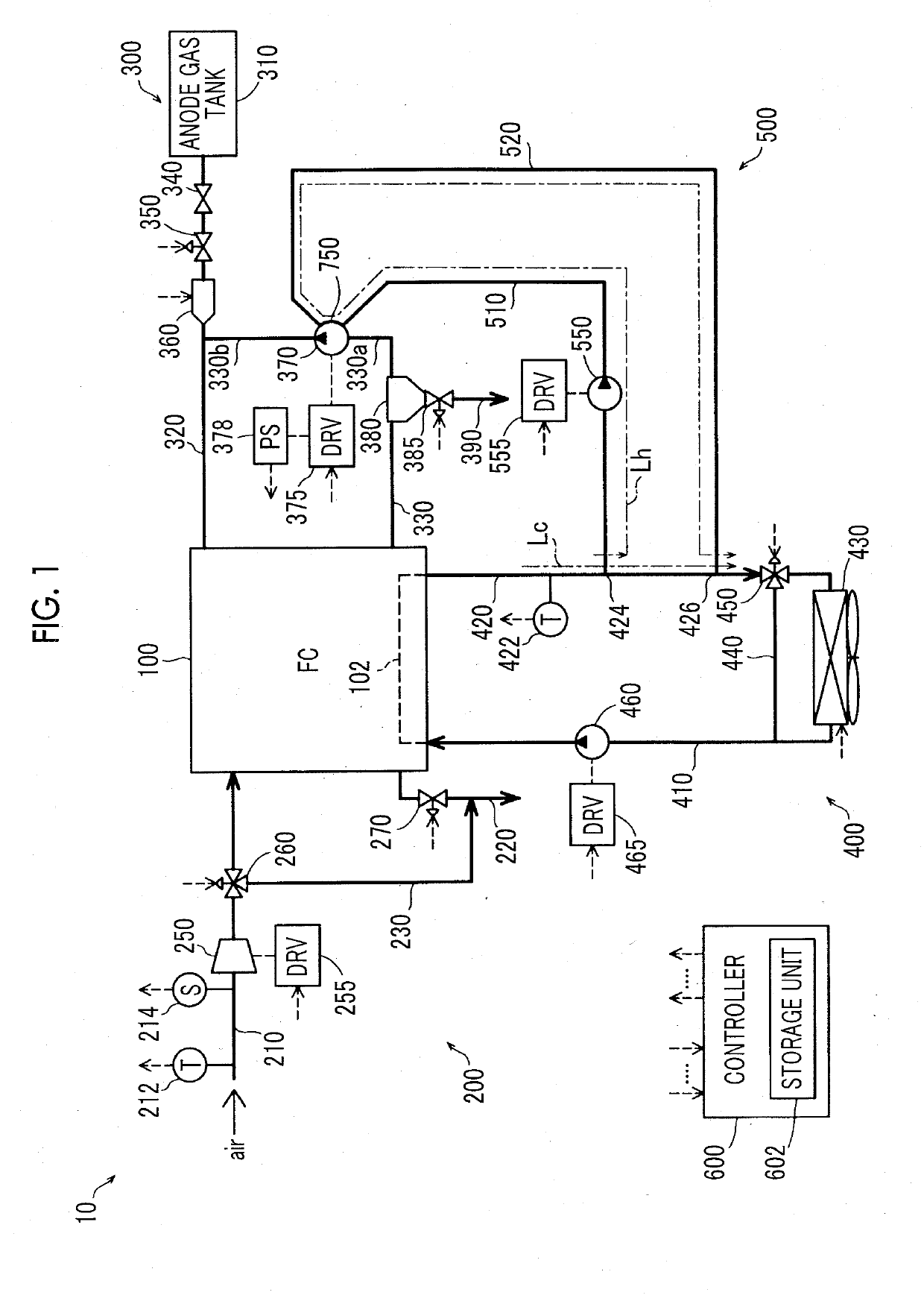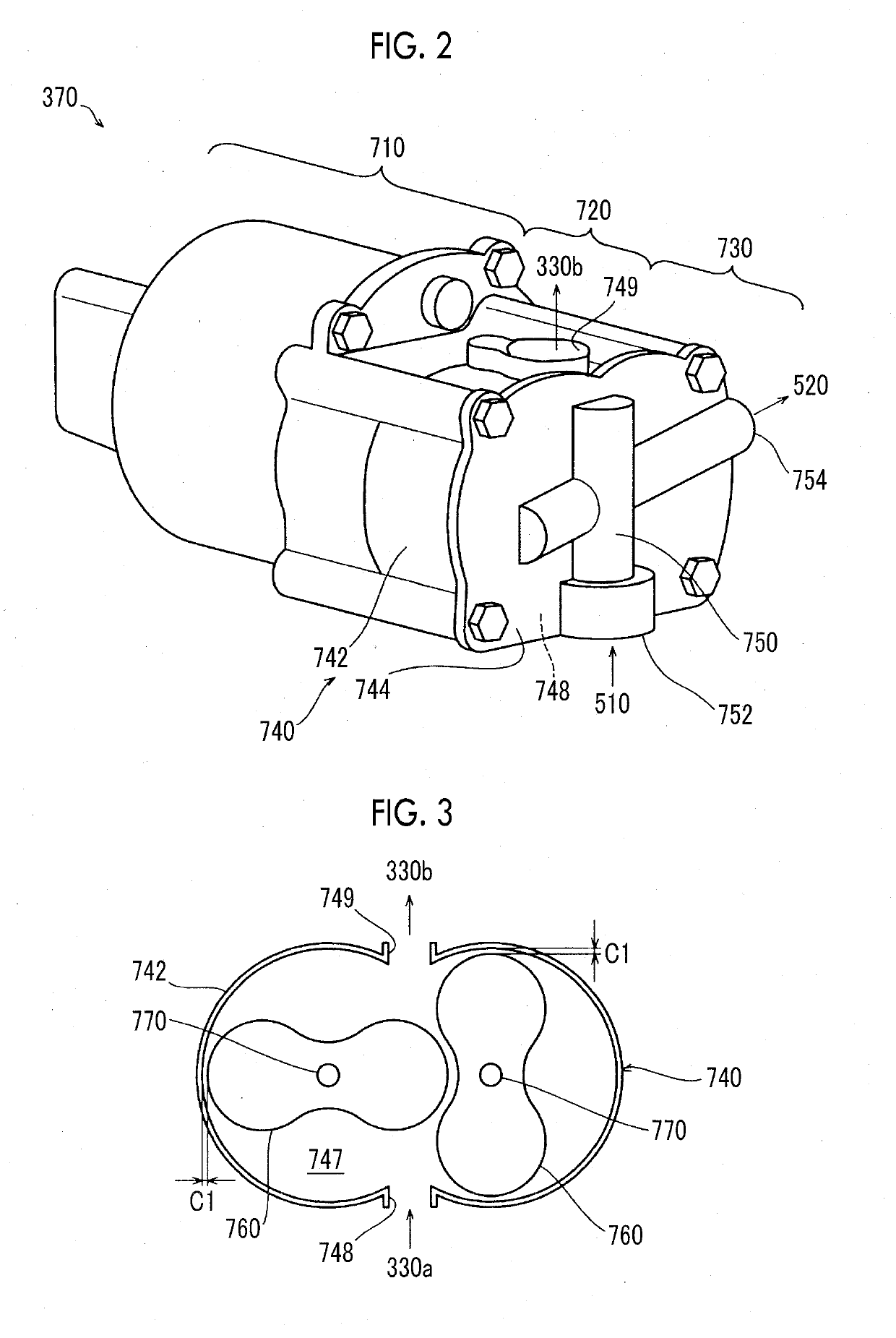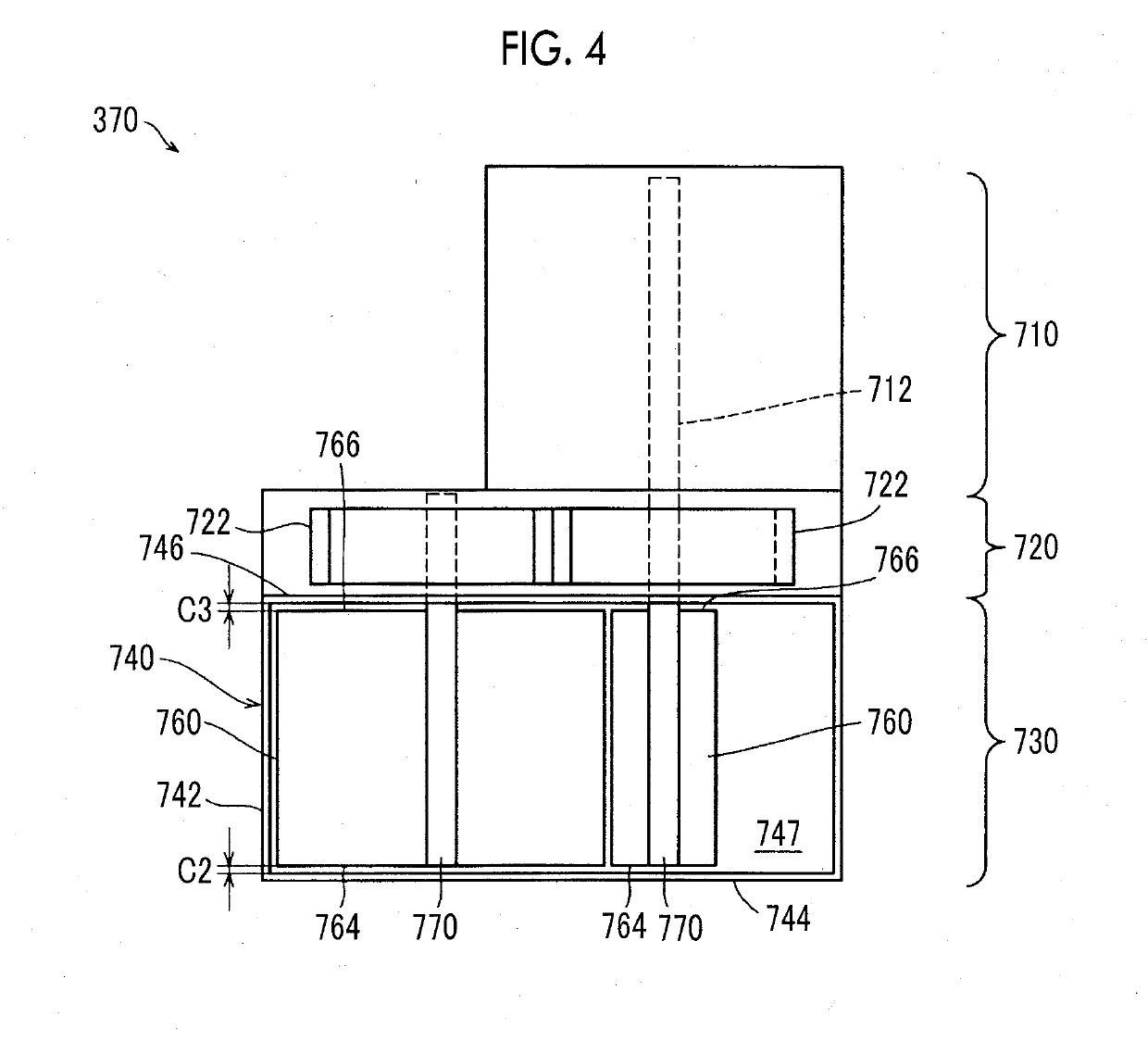Fuel cell system
a fuel cell and system technology, applied in the field of fuel cell systems, can solve the problems of increasing the temperature difference between the rotor and the cylinder, increasing the temperature of the rotor, and malfunction, so as to achieve the effect of further suppressing malfunction, preventing further heating, and preventing further heating
- Summary
- Abstract
- Description
- Claims
- Application Information
AI Technical Summary
Benefits of technology
Problems solved by technology
Method used
Image
Examples
first embodiment
A. First Embodiment
[0032]FIG. 1 is a diagram schematically showing a fuel cell system 10 according to a first embodiment. The fuel cell system 10 is mounted on, for example, a vehicle (fuel cell vehicle) and outputs electric power as a power source for a vehicle in response to a request from a driver. The fuel cell system 10 includes a fuel cell (FC) 100, a cathode gas supply portion 200, an anode gas supply portion 300, a FC cooling portion 400, a heating portion 500, and a controller 600.
[0033]The fuel cell 100 has a stack structure in which a plurality of single cells (not shown) as power generation units is stacked. In the embodiment, the fuel cell 100 is a solid polymer electrolyte fuel cell, but another type of fuel cell may be used. As a support of an electrode catalyst of the fuel cell 100, a carbon material is used.
[0034]The anode gas supply portion 300 includes an anode gas tank 310, an anode gas supply pipe 320, an anode gas circulation pipe 330, a main stop valve 340, a ...
second embodiment
B. Second Embodiment
[0082]FIG. 7 is a diagram schematically showing a fuel cell system 10B according to a second embodiment. The fuel cell system 10B is different from the fuel cell system 10 according to the first embodiment in that: an environment temperature sensor 379 that detects an environment temperature of the anode gas pump 370 as the temperature corresponding to the temperature of the cylinder 740 of the anode gas pump 370 is provided; and a method of determining whether or not the pump temperature difference ΔTp is likely to be higher than or equal to the allowable temperature difference Tcr in the heating treatment of the controller 600 is different as described below. Other configurations of the fuel cell system 10B are the same as those of the fuel cell system 10 (FIG. 1) according to the first embodiment.
[0083]In the second embodiment, unlike the first embodiment, instead of obtaining the increased temperature of the rotor 760 as the pump temperature difference ΔTp, t...
third embodiment
C. Third Embodiment
[0088]FIG. 9 is a diagram schematically showing a fuel cell system 10C according to a third embodiment. The fuel cell system 10C is different from the fuel cell system 10 according to the first embodiment in that: an anode gas supply portion 300C is provided instead of the anode gas supply portion 300 of the fuel cell system 10 (FIG. 1) according to the first embodiment; and a method of determining whether or not the pump temperature difference ΔTp is higher than or equal to the allowable temperature difference Tcr in the heating treatment of the controller 600 is different as described below. Other configurations of the fuel cell system 10C are the same as those of the fuel cell system 10.
[0089]In the anode gas supply portion 300C, a gas temperature sensor 371 that detects a temperature of anode gas flowing into the anode gas pump 370, a flow rate sensor 372 that detects an inflow rate of the anode gas, and an inflow gas pressure sensor 373 that detects a pressur...
PUM
| Property | Measurement | Unit |
|---|---|---|
| temperature | aaaaa | aaaaa |
| temperature | aaaaa | aaaaa |
| temperature | aaaaa | aaaaa |
Abstract
Description
Claims
Application Information
 Login to View More
Login to View More - R&D
- Intellectual Property
- Life Sciences
- Materials
- Tech Scout
- Unparalleled Data Quality
- Higher Quality Content
- 60% Fewer Hallucinations
Browse by: Latest US Patents, China's latest patents, Technical Efficacy Thesaurus, Application Domain, Technology Topic, Popular Technical Reports.
© 2025 PatSnap. All rights reserved.Legal|Privacy policy|Modern Slavery Act Transparency Statement|Sitemap|About US| Contact US: help@patsnap.com



